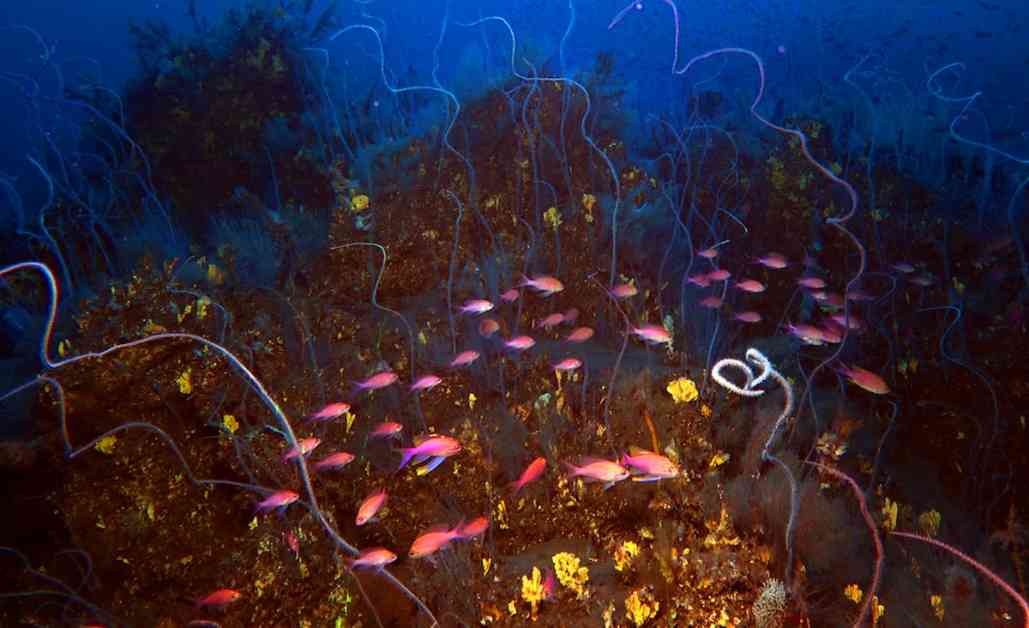Legend of Atlantis: Unveiling the Sunken Mountain near the Canary Islands
The mystery of the legendary lost city of Atlantis has long captured the imagination of people around the world. While many believe it to be a fictional tale from ancient Greek philosopher Plato, recent discoveries off the coast of the Canary Islands have reignited speculation about its possible connection to a submerged mountain known as Mount Los Atlantes.
Unraveling the Enigma of Mount Los Atlantes
Mount Los Atlantes, a vast submerged mountain located off the coast of modern-day Spain’s Canary Islands, has piqued the interest of scientists and researchers alike. According to experts from Spain’s Geological and Mining Institute (CSIC), this underwater mountain is home to three inactive volcanoes, each approximately 50km (30 miles) in diameter, with their bases submerged over 2km beneath the ocean surface.
The CSIC team, led by geologist and project coordinator Luis Somoza, has delved deep into the history of Mount Los Atlantes. Through their research, they have uncovered intriguing evidence suggesting that these volcanoes were once part of a system of islands situated east of Lanzarote during the Eocene era, dating back between 56 and 34 million years ago.
Dr. Somoza points out, “They were islands in the past and they have sunk, they are still sinking, as the legend of Atlantis tells. Some of us have been able to verify that they still maintain their beaches.” This revelation has sparked speculation that the tale of Atlantis, the fabled island described by Plato as lying beyond the Pillars of Hercules near the Strait of Gibraltar, may have originated from the sinking of these ancient volcanic islands.
Exploring the Depths: A Technological Odyssey
To gain a better understanding of the region’s volcanic activity and underwater landscape, a team of geologists embarked on an expedition aboard the Sarmiento de Gamboa, an oceanographic vessel equipped with state-of-the-art technology. Utilizing an advanced remotely operated vehicle (ROV) armed with 5K ultra-resolution cameras and robotic arms for seabed sampling, the researchers set out to explore the depths surrounding Mount Los Atlantes.
During their expedition from 27 June to 6 August, the team conducted a comprehensive survey of the seabed, searching for signs of magma, underwater volcanic activity, and potential risks to Spain’s population in the future. The ROV also featured gas sensors to detect carbon dioxide and methane in the water, providing crucial insights into the environmental conditions of the underwater terrain.
The study revealed a fascinating array of underwater structures, including lava deltas formed by volcanic flows and lava channels reaching depths of up to 1.2km. These impressive geological formations not only shed light on the region’s volcanic history but also offer valuable insights into the formation of underwater minerals and the ecosystem thriving in these extreme conditions.
Ancestral Connections: The Canary Islands Archipelago Revisited
As researchers delved deeper into the underwater world surrounding Mount Los Atlantes, they made a remarkable discovery – these submerged mountains could be considered ancestors of the current Canary Islands archipelago. The study suggested that some of the volcanoes in the underwater region may be more recent than previously believed, possibly serving as the submarine counterparts to Spain’s Timanfaya volcano system.
The rich biodiversity found on the seabed near Mount Los Atlantes paints a vibrant picture of life flourishing in the aftermath of volcanic eruptions. New coral gardens, sponges, and bacterial tapestries have emerged in the region, showcasing the resilience of underwater ecosystems in the face of natural upheavals.
Rebirth and Resurgence: A Symphony of Life in the Depths
The recent underwater robotic survey conducted by the CSIC team has unveiled a fascinating tapestry of life beneath the ocean surface. From the emergence of new coral gardens to the formation of bacterial communities thriving near the underwater volcanoes, the region surrounding Mount Los Atlantes teems with biodiversity and resilience.
The volcanic flows that have shaped the underwater landscape have also provided a fertile ground for the resurgence of marine life. Researchers have observed the rebirth of corals, sponges, and other organisms, highlighting the adaptive nature of these underwater ecosystems in the face of changing environmental conditions.
Subheadings:
Exploring the Enigmatic Depths
Ancestral Connections: Unraveling the Origins of the Canary Islands
Rebirth and Resurgence: A Symphony of Life in the Depths
In conclusion, the legend of Atlantis continues to captivate and intrigue us, offering a glimpse into the mysteries of the past and the wonders of the natural world. The discovery of Mount Los Atlantes and its submerged volcanic landscape near the Canary Islands serves as a reminder of the enduring connections between geology, mythology, and the human imagination. As we venture further into the depths of the ocean, who knows what other secrets and wonders await us, waiting to be unveiled and shared with the world.


